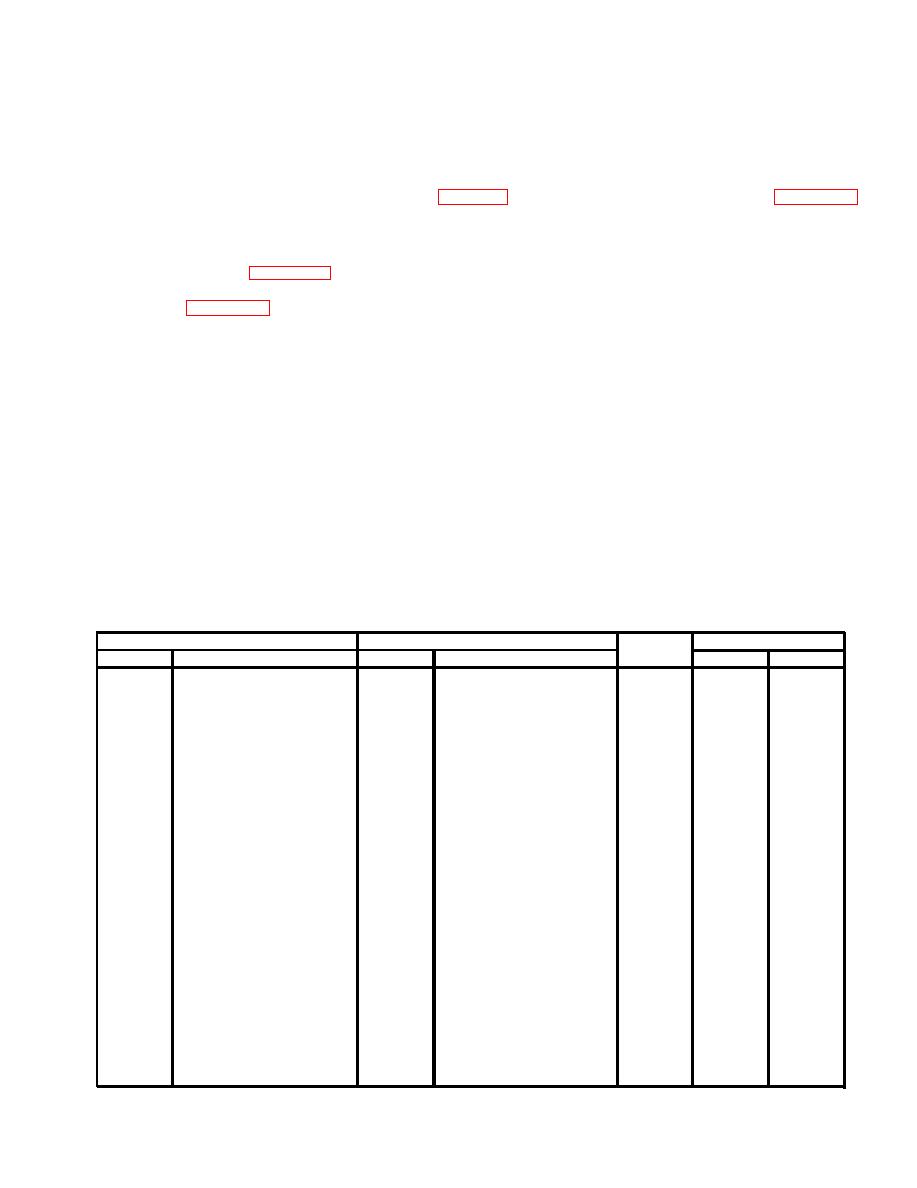
TM 9-4120-388-14
4-36. ELECTRICAL WIRING REPAIR GENERAL. Preferred repair methods consist of replacing wires, terminals, con-
nectors, etc., rather than splicing wires, bending ends to form terminals, and other make-shift procedures; although the
latter may be appropriate for emergency field repairs. Determine the proper size and length of wire, or the terminal, or
connector to be used for replacement by referring to Table 4-3, "Wire List", and to the wiring diagram (Figure 4-16).
a. Soldering connections. Wire connections must be made mechanically sound before they are soldered; solder
alone does not provide sufficient strength to prevent breakage. Joining surfaces of connections to be soldered
must be clean and bright. If a separate flux is used, it should conform to Specification MlL-F-14256, rosin base
flux (item 6, Appendix E) and should be brushed onto the joint before soldering. If a flux-core solder is used,
it should always be rosin-core electrical solder. If an uncored solder is used, it should be a lead-tin solder (item
13, Appendix E) conforming to Specification QQ-S-571. Wires should always be heated to the point at which
the solder will melt completely and flow into all parts of the joint. Excessive build-up of solder "gobs" on the joint
should be avoided or removed.
b. Insulating joints. The preferred method of insulating electrical joints is by the use of heat-shrink tubing. To apply,
cut a piece of heat-shrink tubing of suitable diameter to a one-inch length for covering joints at terminals or
connectors, or to a length about 1/2 inch (13 mm) longer than the joint to be insulated, and slide the tubing over
the wire before making the joint. After the joint is made, slide the tubing so that it covers the joint, and shrink
in place with moderate heat.
c. Splicing wires. To repair broken or cut wires that are otherwise sound, the mating ends can be stripped and
spliced. A commercial butt splice can be crimped onto the end to join them, or a "Western Union" wire splice
can be made. The latter is made by stripping 1/4-1/2 inch (6 -13 mm) of insulation from the wire ends, holding
the ends parallel and facing opposite directions, then twisting each end around the other wire at least three
turns. Solder and apply insulation as described above.
d. Crimping terminals. To install a terminal on the end of a wire, strip 1/4 - 1/2 inch (6 -13 mm) of insulation from
the end of the wire, apply a one-inch piece of heat-shrink tubing (if the terminals are of the uninsulated type),
and insert wire end into the shank of the terminal. Crimp the shank, and install heat-shrink tubing, if necessary.
TERMINATION
TERMINATION
AWG WIRE
LENGTH
SIZE
TERMINAL TYPE
TO
IN.
FROM
TERMINAL TYPE
MM
WIRlNG HARNESS S4
HR5-B
16
MS25036-108
127
S4-4
(97403) 13211 E8265
5.0
HR4-B
16
MS25036-108
6.0
152
S4-5
(97403) 13211 E8265
HR4-B
16
4.0
(97403) 13211 E8265
MS25036-108
102
S4-6
LOOSE WIRE
S7-2
16
127
S6-1
MS25036-153
MS25036-153
5.0
WIRING HARNESS J1 -P13
P13-A
10
J1-A
MS3100R22-22P
MS3106R22-22S
36.0
914
P13-B
10
MS3106R22-22S
J1-B
MS3100R22-22P
36.0
914
10
P13-C
MS3106R22-22S
914
J1-C
MS3100R22-22P
36.0
10
P13-D
J1-D
MS3100R22-22P
MS3106R22-22S
36.0
914
WIRING HARNESS J13-P10
P10-A
10
MS3106R22-22S
J13-A
S100R22-22P
36.0
914
10
P10-B
MS3106R22-22S
914
J13-B
MS3100R22-22P
36.0
P10-C
10
J13-C
MS3100R22-22P
MS3106R22-22S
36.0
914
10
P10-D
MS3106R22-22S
J13-D
MS3100R22-22P
36.0
914
WIRE HARNESS J3
TB1-2
16
MS25036-108
MS3102R36-7S
8.0
J3-A
203
TB1-3
16
J3-B
MS3102R36-7S
MS25036-108
10.0
254
TB2-5
16
J3-J
MS3102R36-7S
MS25036-106
13.0
330
12
J3-w
(97403) 13216E6191-3
CB1-C2
14.0
356
CB1-62
12
J3-u
(97403) 13216E6191-3
14.5
368
12
CB1-A2
J3-v
(97403) 13216E6191-3
15.0
381
TB2-3
16
J3-G
MS3102R36-7S
MS25036-106
11.0
279
TB2-2
16
J3-E
MS3102R36-7S
MS25036-106
11.0
279
4-67

